|
|
| Übersicht – Contents: | |
Diese Seite ist Teil des Projektes
|
|
| Übersicht – Contents: | |
Flaggen – Flags: |
|
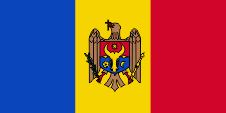 |
National-, Staats und Handelsflagge |
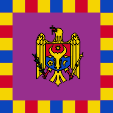 |
Flagge des Präsidenten |
historische Flaggen – historical Flags: |
|
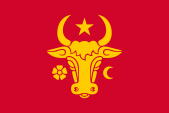 |
14.–15. Jhd./century, |
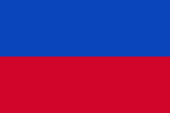 |
18./19. Jhd./century, |
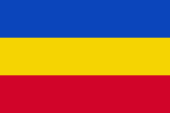 |
1917–1918, |
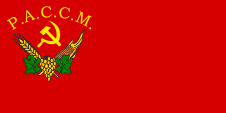 |
1925–1938, Flagge der Moldauischen Autonomen Sozialistischen Sowjetrepublik – Flag of Moldovan Autonomous Soviet Socialist Republic, Seitenverhältnis – ratio = 1:2, Quelle/Source, nach/by: World Statesmen |
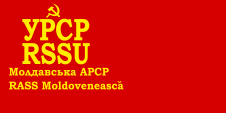 |
1938, Flagge der Moldauischen Autonomen Sozialistischen Sowjetrepublik – Flag of Moldovan Autonomous Soviet Socialist Republic, Seitenverhältnis – ratio = 1:2, Quelle/Source, nach/by: World Statesmen |
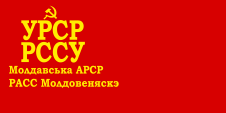 |
1938–1940, Flagge der Moldauischen Autonomen Sozialistischen Sowjetrepublik – Flag of Moldovan Autonomous Soviet Socialist Republic, Seitenverhältnis – ratio = 1:2, Quelle/Source, nach/by: World Statesmen |
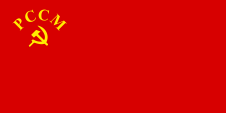 |
1940–1952, Flagge der Moldauischen Sozialistischen Sowjetrepublik – Flag of the Moldavian Soviet Socialist Republic, Seitenverhältnis – ratio 1:2, Quelle/Source, nach/by: World Statesmen |
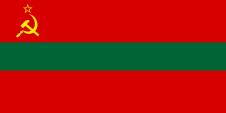 |
1952–1991, Flagge der Moldauischen Sozialistischen Sowjetrepublik – Flag of the Moldavian Soviet Socialist Republic, Seitenverhältnis – ratio 1:2, Quelle/Source, nach/by: World Statesmen |
regionale Flaggen – regional Flags: |
|
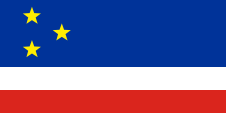 |
seit/since 1995, |
 |
seit 1991 (Sezession/Secession), |
| Die heutige Flagge Moldawiens wurde am 06.11.1990 erstmals offiziell gehisst. Sie zeigt drei senkrechte Streifen in Blau, Gelb und Rot mit dem Staatswappen im gelben Mittelfeld. Eigentlich sind Blau und Rot die historischen moldauischen Nationalfarben, die auf das Fürstentum Moldau zurückgehen. Sie wurden vom historischen Wappen des Landes abgeleitet. Die Farben der Flagge sind seit 2010 per Gesetz niedergelegt. Sie werden folgendermaßen angegeben: Blau = Pantone 293, Gelb = Pantone 109, Rot = Pantone 186. Die auffällige Ähnlichkeit der heutige Flagge Moldawiens mit der Flagge Rumäniens ist beabsichtigt. Die Moldawier sind Rumänen und sprechen einen rumänischen Dialekt. | The
today's flag of Moldova was hoisted for the first time on the 6th of
November in 1990. It shows three vertical stripes in blue, yellow and red
with the coat of arms of the state in the yellow middle field. Actually are
blue and red the historical Moldovan national colours, which go back to the
Principality of Moldova. They have their roots in the historic coat of arms
of the country. The colours of the flag are laid down per law since 2010. They are given as follows: Blue = Pantone 293, Yellow = Pantone 109, Red = Pantone 186. The conspicuous similarity of the today's flag of Moldova with the flag of Romania is intended. The Moldovans are Romanians and speak a Romanian dialect. |
| Quelle/Source: Wikipedia (EN), Flags of the World, Volker Preuß | |
Wappen – Coat of Arms: |
|
 |
Wappen von Moldawien – coat of arms of Moldova, Quelle/Source, nach/by: Wikipedia (EN) |
|
|
|
historische Wappen – historical Coats of Arms: |
|
 |
1878, Wappenschild des russischen Gouvernements Bessarabien – Escutcheon of the Russian Governorate of Bessarabia, Quelle/Source, nach/by: Wikipedia (EN) |
 |
1917–1918, Wappen der Moldauischen Demokratischen Republik – Coat of Arms of the Moldovan Democratic Republic, Quelle/Source, nach/by: Wikipedia (EN) |
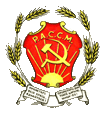 |
1927–1938, Wappen der Moldauischen Autonomen Sozialistischen Sowjetrepublik – Coat of Arms of the Moldovan Autonomous Soviet Socialist Republic, Quelle/Source: Wikipedia (EN), not credited, Public domain, via Wikimedia Commons |
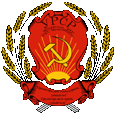 |
1938–1940, Wappen der Moldauischen Autonomen Sozialistischen Sowjetrepublik – Coat of Arms of the Moldovan Autonomous Soviet Socialist Republic, Quelle/Source: Wikipedia (EN), not credited, Public domain, via Wikimedia Commons |
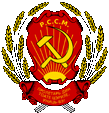 |
1940–1941, Wappen der Moldauischen Sozialistischen Sowjetrepublik – Coat of Arms of the Moldavian Soviet Socialist Republic, Quelle/Source: Wikipedia (EN), : Pianistmodifications: TilmannR, Public domain, via Wikimedia Commons |
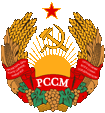 |
1941–1990, Wappen der Moldauischen Sozialistischen Sowjetrepublik – Coat of Arms of the Moldavian Soviet Socialist Republic, Quelle/Source: Wikipedia (EN), : Fry1989, Jam123modifications: TilmannR, Public domain, via Wikimedia Commons |
| Das am 13.07.1990 eingeführte Wappen zeigt einen Adler mit einem goldenem Kreuz im Schnabel. In seinen Krallen hält er ein goldenes Zepter und einen Ölzweig. Der Brustschild ist oben rot mit einem goldenem Stern und unten blau mit einer Rose und einem Halbmond. In der Mitte ein goldener Auerochsenkopf. Vorbild des Wappens ist der rumänische Adler. | The on
13th of July in in 1990 introduced coat of arms shows an eagle with a golden
crucifix in the beak. In its claws it holds a golden scepter and an
oil-twig. The chest-shield is above red with a golden star and below blue with a rose and a crescent. In the middle a golden head of an ox. Pattern for the coat of arms is the Romanian eagle. |
| Quelle/Source: Wikipedia (EN), Volker Preuß | |
Flugzeugkokarde – aircraft roundel: |
|
 |
Flugzeugkokarde – aircraft roundel Quelle/Source: nach/by Wikipedia (EN) |
Landkarte – Map: |
Lage – Position: |
Landkarte des Landes – Map of the Country: |
|
|
| Zahlen und Fakten – Numbers and Facts: | |
|
|
|
|
|
|
|
|
|
|
|
|
|
|
|
|
|
|
|
1061–1240
· das Gebiet ist Teil des Reiches der Kumanen 1359 · Gründung des rumänischen Fürstentums Moldau zwischen den Karpaten und dem Dnjestr 1387 · Abhängigkeit von Polen-Litauen 1455 · das Fürstentum Moldau wird dem Osmanischen Reich tributpflichtig 1511 · Moldau wird vom Osmanischen Reich unter beschränkter innerer Autonomie annektiert 1775 · Abtretung des Buchenlandes (Bukowina) an Österreich 1806–1812 · russisch-türkischer Krieg 1812 · Frieden von Bukarest, der östliche Teil des rumänischen Fürstentums Moldau (zwischen den Flüssen Prut und Dnjestr) kommt unter dem Namen Bessarabien an Russland 1853–1856 · Krimkrieg, vorübergehende Besetzung durch österreichische Truppen, Bessarabien verbleibt bei Russland 1861 · das rumänische Restgebiet des das Fürstentums Moldau (zwischen den Karpaten und dem Fluss Prut) vereinigt sich mit der Walachei zum Fürstentum Rumänien 1914–1918 · Erster Weltkrieg, Rumänien beteiligt sich ab 1916 an der Seite der Entente im Krieg 1917 · bolschewistische Revolution in Russland, Bürgerkrieg, Proklamation der Moldauischen Demokratischen Republik 09.04.1918 · Annexion von Bessarabien durch das Königreich Rumänien 1919/1920 · Frieden von Saint-Germain und Frieden von Trianon, Rumänien erhält offiziell Bessarabien, das östliche Banat, die Bukowina und Siebenbürgen 1924 · Gründung der Moldauischen Autonomen Sozialistischen Sowjetrepublik (Transnistrien) auf dem Gebiet der Sowjet-Ukraine 1939–1945 · Zweiter Weltkrieg: 1940 die Sowjetunion zwingt Rumänien zur Abtretung von Bessarabien, der Südteil des Landes wird abgetrennt und der Sowjet-Ukraine angeschlossen, der Nordteil wird an die Moldauische Autonome Sozialistische Sowjetrepublik angeschlossen und die Moldauische Sozialistische Sowjetrepublik proklamiert, 1941 Rumänien kann Bessarabien wieder besetzen und annektiert das Gebiet bis zum Südlichen Bug, 1944 Bessarabien wird von sowjetischen Truppen besetzt 1947 · Friedensvertrag von Paris, Rumänien erkennt die sowjetische Annexion und den Bestand der Moldauischen Sozialistischen Sowjetrepublik an 1989 · Unruhen 1990 · Proklamation der Republik Gagausien, Bürgerkrieg 27.08.1991 · Proklamation der Unabhängigkeit der Republik Moldawien (Moldova) von der Sowjetunion, Bürgerkrieg, Abspaltung der Dnjestr-Republik (Transnistrien) 1994 · bei einer Volksabstimmung wird die Vereinigung mit Rumänien abgelehnt, Gagausien wird als Republik innerhalb Moldawiens anerkannt |
| 1061–1240
· the area is a part of the Empire of the Kumans 1359 · foundation of the Romanian Principality of Moldavia between the Carpathia Mountains and the Dnjestr River 1387 · dependence from Poland-Lithuania 1455 · the Principality of Moldavia becomes subject to tribute to the Ottoman Empire 1511 · Moldavia becomes annexed by the Ottoman Empire under limited internal autonomy 1775 · ceding of the Buchenland (Bukovina) to Austria 1806–1812 · Russian-Turkish War 1812 · Peace of Bucarest, the eastern part of the Romanian Principality of Moldavia (between the rivers Prut and Dnjestr) comes under the name Bessarabia to Russia 1853–1856 · Crimean War, transient occupation by Austrian troops, Bessarabia remains at Russia 1861 · the Romanian residual area of the Principality of Moldavia (between the Carpathia Mountains and the Prut River) unites with Wallachia to the Principality of Romania 1914–1918 · First World War, Romania is enlisted in the war since 1916 on the side of the Entente 1917 · Bolshevist revolution in Russia, civil war, proclamation of the Moldovan Democratic Republic 9th of April 1918 · annexation of Bessarabia by the Kingdom of Romania 1919/1920 · Peace of Saint Germain and Peace of Trianon, Romania receives officially Bessarabia, the eastern Banat, Bukovina and Siebenburgen 1924 · foundation of the Moldovan Autonomous Socialistic Soviet Republic (Transnistria) on the territory of the Soviet Ukraine 1939–1945 · Second World War: 1940 the Soviet Union forces Romania to cede Bessarabia, the southern part of the country becomes separated and annexed by the Soviet Ukraine, the northern part becomes annexed to the Moldovan Autonomous Socialistic Soviet Republic and they proclaimed the Moldovan Socialistic Soviet Republic, 1941 Romania is able to occupy Bessarabia again and annexes the area to the Southern Bug River, 1944 Bessarabia becomes occupied by Soviet troops 1947 · Peace Treaty of Paris, Romania recognizes the soviet annexations and the subsistence of the Moldovan Socialistic Soviet Republic 1989 · riots 1990 · proclamation of the Republic of Gagauzia, civil war 27th of August 1991 · proclamation of the independence of the Republic of Moldova from Soviet Union, civil war, separation of the Dnjestr-Republic (Transnistria) 1994 · in a referendum the unification with Romania becomes rejected, Gagauzia becomes recognized as republic within Moldova |
| Quelle/Source: Atlas zur Geschichte, Wikipedia (D), World Statesmen |
| Der Name
Moldawien (Moldau, Moldova) leitet sich vom Namen des im heutigen
Nordost-Rumänien gelegenen Flusses Moldau (Moldova) ab. Er war der
Namenspatron für das historische Fürstentum Moldau. Der Name Bessarabien hat mit Arabien nichts zu tun. Er geht auf die Familiendynastie der Bessarab zurück. |
The name
Moldova (Moldavia, Moldau) has its roots in the name of the now in the
Northeast of Romania situated Moldova River (Moldau). It was the name-patron
for the historic Principality of Moldavia. The name Bessarabia has nothing to do with Arabia. It has its roots in the family's dynasty of the Bessarab. |
| Quelle/Source: Volker Preuß | |